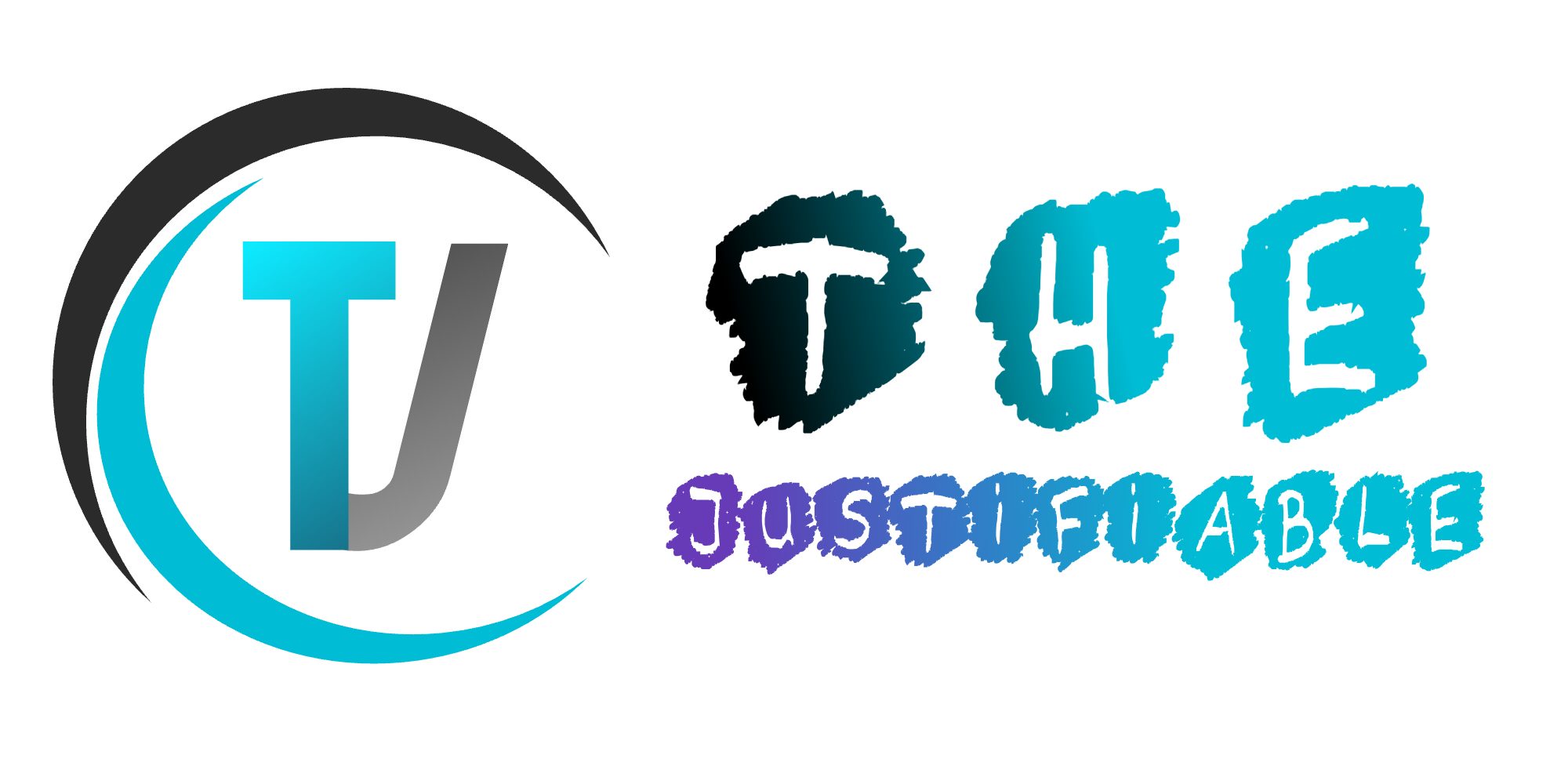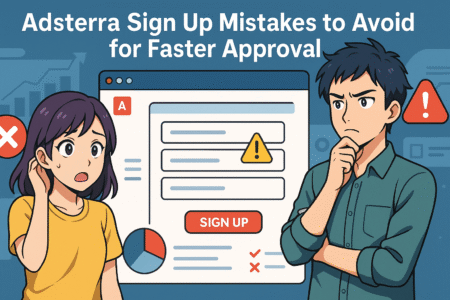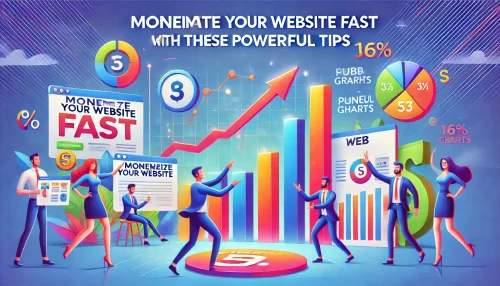Table of Contents
If you’re struggling to get YouTube views consistently, you’re not alone. What if there was a smarter way to grow your channel—without constantly uploading or spending on ads? How can creators attract more views around the clock, even while they sleep?
In this guide, we’ll walk through a powerful strategy that helps you automate growth, boost visibility, and finally make the algorithm work for you.
Unlock The Power Of Evergreen YouTube Content
If you want to get YouTube views without constantly uploading new videos, evergreen content is your best bet. These are videos that remain relevant over time, attracting clicks and engagement long after they’re published.
Why Evergreen Content Works While You Sleep
Evergreen videos tap into consistent search intent. Unlike trend-based videos that fade fast, evergreen content keeps working in the background—ranking in search, popping up in recommendations, and drawing views from new audiences every day.
When you create content that solves timeless problems or answers recurring questions, you’re building a view-generating machine. I’ve seen creators grow from a few hundred to thousands of daily views just by focusing on a few high-performing evergreen topics.
Here’s what makes evergreen content powerful:
- It’s searchable year-round.
- It ranks longer in YouTube search.
- It naturally encourages longer watch time and replays.
Think of topics like “How to Start a Blog,” “iPhone Camera Tips,” or “Easy Pasta Recipes.” These don’t lose relevance and attract searches consistently.
Choosing Topics That Stay Relevant For Years
Start with problems people always face. Ask yourself: Will this matter a year from now? Five years? Content like tutorials, FAQs, and beginner guides usually hold up over time.
Use tools like:
- Google Trends to check long-term interest.
- AnswerThePublic for timeless questions.
- Your own FAQs from clients, emails, or YouTube comments.
Also, avoid news, pop culture, or platform-specific fads (unless you plan to update frequently). Instead, aim for solutions, not headlines.
How-To, Tutorials, and Reviews That Keep Getting Clicked
“How to” content never goes out of style. Whether it’s setting up software, fixing a common issue, or learning a skill, people are always searching for guidance.
Tutorials work best when they:
- Focus on clear, narrow problems.
- Show every step visually.
- Include timestamps for easy navigation.
Reviews are another goldmine. Choose evergreen products like books, software, or kitchen tools. Focus on what people want to know before buying: usability, pros and cons, and honest impressions.
Tools to Find Evergreen Video Ideas with Low Competition
If you’re wondering how to spot the right ideas, a few tools make it easier:
- TubeBuddy: Find keyword scores, video competition, and suggested tags based on real-time data.
- VidIQ: Helps evaluate long-term content performance and keyword strength.
- Ubersuggest: Offers historical keyword trends and search volume for evergreen niches.
The key is balancing search volume with low competition. A topic with 500 monthly searches and little competition is more valuable long-term than one with 50,000 and saturated results.
Optimize Videos With Long-Tail Keywords That Rank
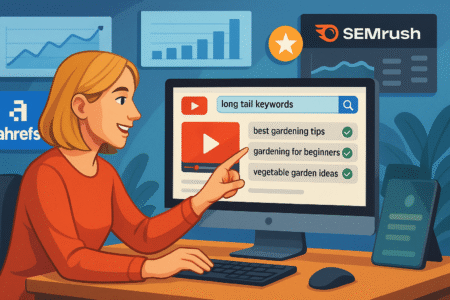
To get YouTube views on autopilot, you need more than good content—you need to be discoverable. Long-tail keywords make it easier to rank, attract your target audience, and stay competitive.
The SEO Secret Behind Autopilot YouTube Growth
The truth is, YouTube is the second largest search engine in the world. That means SEO isn’t optional—it’s a necessity.
Long-tail keywords are the backbone of YouTube SEO. These are specific, lower-competition phrases that reflect how real people search. For example, instead of targeting “fitness,” go for “15 minute morning yoga for beginners.”
Why does this matter? Because long-tail keywords:
- Have less competition.
- Attract more qualified viewers.
- Are easier to rank for with fewer subscribers.
When you pair strong content with precise keyword targeting, your videos work behind the scenes to bring in consistent traffic.
How To Find Low-Competition Keywords Viewers Actually Search
Start by thinking like your audience. What would you type if you were searching for your video? Use that to build a list of potential search phrases.
Then plug those into:
- YouTube’s Search Suggest: Type your base keyword and see what autocomplete suggests.
- Google Keyword Planner: Filter by YouTube-specific terms.
- VidIQ and TubeBuddy: Analyze competition, average views, and search volume.
You’ll want to find keywords with:
- Medium to high search volume.
- Low to moderate competition.
- Strong alignment with your video’s content.
Writing Magnetic Titles That Target Long-Tail Keywords
Your title is your hook. It needs to match the keyword and spark curiosity. The best titles combine clarity with a subtle emotional pull.
For example:
- “How to Meal Prep for Weight Loss (Fast & Easy!)”
- “Beginner’s Guide to Investing in 2025”
Use these tips:
- Put the keyword at the beginning of your title.
- Keep it under 60 characters when possible.
- Add emotional words like “easy,” “fast,” “proven,” or “step-by-step.”
And always test different formats. Small changes can lead to big improvements in click-through rate.
Smart Description, Tag, and Hashtag Strategies That Stick
Once your title gets the click, your description backs it up. It should reinforce your keyword naturally in the first two lines—those show up in search previews.
Structure your description like this:
- 1–2 keyword-rich sentences summarizing the video.
- A timestamp outline (for longer videos).
- Links to related content or playlists.
- Hashtags at the end (3–5 max).
Tags are less important than they used to be, but they still help categorize your video. Include your focus keyword, related variations, and branded tags.
Hashtags boost discoverability but don’t overdo it. Stick to:
- Niche-specific tags (e.g., #BeginnerYoga)
- Content type (e.g., #Tutorial)
- Occasional trending or event-based tags if relevant
Create Binge-Worthy Playlists That Drive Continuous Views
Playlists are more than just video collections—they’re a strategy. When done right, playlists increase session time, guide your audience through your content, and help you get YouTube views steadily and passively.
Why Playlists Increase Watch Time and Video Visibility
YouTube values time spent on the platform. Playlists encourage viewers to stick around longer by playing videos back-to-back, which improves your channel’s overall performance.
Watch time is one of the strongest ranking signals. So when someone watches a few videos in a row from your playlist, you’re sending the algorithm a clear message: people enjoy your content.
There’s also a bonus—YouTube can index playlists in search results. That means a well-optimized playlist has the potential to rank alongside individual videos, giving you an extra way to be discovered.
How To Structure Playlists for Maximum Engagement
Your playlist layout matters more than most people think. Randomly dumping videos into a folder won’t help. Instead, build playlists that feel like a guided journey.
Here’s how you can structure them:
- Group videos by audience need: For example, a cooking channel might have “5-Minute Weeknight Meals” or “Beginner Baking Tutorials.”
- Start with your strongest video: Hook viewers early so they keep watching.
- Use a logical order: Teach concepts progressively or match a viewer’s learning path.
Also, don’t just use your own videos. If it makes sense, mix in high-quality videos from others in your niche to keep the playlist valuable.
Naming Tricks to Trigger Curiosity and Auto-Play
A good playlist name can be just as impactful as a video title. It should clearly tell viewers what they’re getting while also sparking curiosity.
Try approaches like:
- “Learn SEO in 7 Easy Lessons”
- “Productivity Hacks That Actually Work”
- “Behind the Scenes: How Creators Film and Edit”
Avoid bland names like “My Uploads” or “Video Collection.” Instead, use phrases your audience would actually search for or click on.
Use the playlist description too. Add a few lines explaining what it includes and naturally include your focus keyword when relevant.
Embedding Playlists Strategically on Blogs and Social Media
Don’t just upload and hope for views. Promote playlists the same way you would a flagship video.
Effective ways to embed playlists:
- Inside relevant blog posts: Include them mid-article as a resource.
- On your homepage or landing page: Especially if they help explain a topic or product.
- On social platforms: Share the playlist link instead of a single video when promoting a series.
This not only increases visibility but also builds authority by showing you’ve curated a thoughtful collection of value-packed content.
Schedule Uploads And Use YouTube Premieres Effectively
Consistency matters more than frequency. And when you combine scheduled uploads with strategic Premieres, you create predictable patterns that the algorithm—and your audience—can follow.
The Psychology of Scheduled Content and Viewer Anticipation
When viewers know when to expect your content, they’re more likely to return. Scheduled uploads mimic the predictability of TV shows—people plan around them.
This psychological effect builds routine and trust. It’s like saying, “Hey, I’ll meet you here every Tuesday at 6.” Viewers appreciate that stability, and it boosts long-term engagement.
The YouTube algorithm also notices consistent publishing times. Over time, it starts preemptively suggesting your content to viewers it believes will engage.
When and How To Use Premieres for More Watch Time
Premiering a video adds a live-event feel to a regular upload. It turns passive viewing into a moment of shared anticipation.
Here’s when to use it:
- For new series launches.
- On milestone videos (e.g., 100K subscribers).
- With collaborations or giveaways.
Premieres allow live chat during the debut, creating community engagement. They also nudge viewers to tune in on time—which boosts initial watch time and helps videos get picked up in recommendations.
Before you premiere:
- Promote the time on all platforms.
- Create a custom thumbnail and title.
- Stay active in the chat for 15–20 minutes after release.
Creating a Content Calendar That Builds Momentum
Without a calendar, your upload schedule becomes a guessing game. But when you plan ahead, you can batch content, align with trends, and avoid burnout.
To build a simple YouTube calendar:
- Start with 2–4 video topics per month.
- Block specific production and edit days.
- Plan for breaks or re-uploading archived content.
Use tools like Trello, Notion, or Google Sheets. Keep your strategy flexible, but aim for rhythm over randomness.
A steady flow of content—planned a few weeks in advance—keeps your audience engaged and builds algorithmic trust.
Setting Up Auto-Reminders and Notifications for Subscribers
Once your upload or Premiere is scheduled, remind your audience about it. YouTube sends notifications, but they don’t always reach everyone—so it helps to supplement.
Here are simple ways to automate reminders:
- Use community posts with countdowns or behind-the-scenes.
- Set email list alerts with teaser links or clips.
- Post short IG stories or TikToks linking to the Premiere page.
- Use YouTube Shorts as mini-trailers for long-form content.
Even a 10% increase in day-one traffic can significantly improve how a video performs long-term.
Set Up End Screens And Cards That Funnel Views
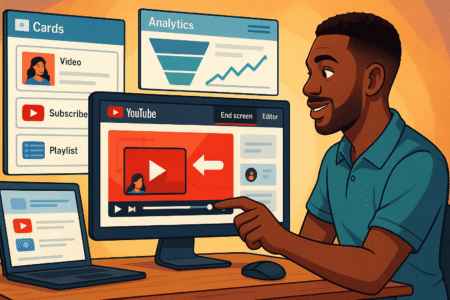
One of the easiest ways to get YouTube views without creating more videos is to guide people from one video to the next. End screens and cards do just that—when placed strategically, they keep viewers on your channel longer and help grow your total watch time.
Turning One Video Into A Chain of Views
Think of each video as a doorway—not a dead-end. You don’t want viewers to leave after just one. The goal is to gently guide them to related content that continues the conversation or deepens their understanding.
End screens let you:
- Promote another video or playlist at the end of your content.
- Encourage viewers to subscribe.
- Drive traffic to an external site (if your account is eligible).
Cards pop up during the video itself and are perfect for adding mid-watch suggestions or clarifying points. Use them to point to deeper dives, related tutorials, or even a product demo.
Strategic Placement of Cards To Keep People Watching
Cards should feel helpful, not intrusive. The best time to add a card is when your video brings up a related topic or moment that might spark curiosity.
For example:
- At the 1-minute mark: Link to a “part two” or bonus video.
- During a tutorial: Offer a tool review or comparison guide.
- At a natural drop-off point: Re-engage viewers with something fresh.
Avoid adding too many cards—stick to one or two, and make sure they truly enhance the viewing experience.
End Screen Templates That Convert Casual Viewers
A clean end screen layout helps focus attention. I like to use a two-element format: one video and one subscribe button.
Here are a few high-converting setups:
- Video + Playlist: Great for building binge sessions.
- Best for viewer + Subscribe: Lets YouTube suggest your most relevant video.
- Next step + External link: Useful for courses, products, or lead magnets.
Try including a short voiceover or visual cue pointing to the end screen. A simple “Watch this next” can make a big difference.
Testing and Tracking What Gets the Most Clicks
You don’t need to guess what’s working. YouTube Analytics gives you a breakdown of end screen and card performance.
Check the “End screen element click rate” metric to see:
- Which videos keep people engaged.
- Whether viewers click the suggested content or not.
- What layout and timing perform best.
If certain types of end screens perform poorly, test new combinations. This is one of the easiest ways to improve session duration with minimal effort.
Automate Social Sharing Across Multiple Platforms
Manually posting your videos to every social channel takes time. Automating this process not only saves hours but ensures your content gets seen consistently across different audiences.
Using Social Tools To Share Videos At Scale
There are a handful of reliable tools that make social sharing a breeze. These platforms allow you to schedule, queue, and auto-post your videos across multiple accounts.
Top options include:
- Buffer: Clean interface, great for scheduling across Twitter, LinkedIn, and Facebook.
- Zapier: Lets you connect YouTube with almost any platform.
- Publer or SocialBee: Ideal for content recycling and visual scheduling.
These tools let you build a queue of posts that go out at peak times—without needing to manually post each one.
Best Times To Post On Facebook, Twitter, LinkedIn, and Reddit
Each platform has its own rhythm. Sharing your video at the right moment increases visibility and engagement.
Here’s what tends to work:
- Facebook: 1 PM–3 PM on weekdays, especially Thursday.
- Twitter: 9 AM–12 PM is ideal for retweets and link clicks.
- LinkedIn: Tuesday to Thursday mornings (9 AM–11 AM).
- Reddit: Early mornings or evenings in relevant subreddits (never spam—always provide value).
Experiment with your audience insights to refine the timing. Some tools like Buffer and Later even suggest optimal posting windows based on engagement data.
Linking Your YouTube Channel With Zapier and Buffer
Zapier is especially useful for setting up “if this, then that” style automations.
Here are simple Zap examples:
- When a new YouTube video goes live, share to Twitter with a thumbnail and title.
- Post new uploads to a specific LinkedIn group or company page.
- Auto-send a link to your email list via Mailchimp or ConvertKit.
Linking YouTube with Buffer adds even more flexibility. You can queue up different versions of the same video teaser (text variations, different hashtags) for weeks of re-promotion.
Templates for Eye-Catching Video Teasers
Instead of dropping a plain link, create short teasers that spark curiosity.
Here are a few tested formats:
- Quote from the video: “I made this mistake in my first year—don’t repeat it.”
- Question style: “Struggling to edit videos fast? This helped me cut hours.”
- Quick benefit: “Learn how I doubled views without uploading more often.”
Pair the teaser with a clean thumbnail, the video link, and 1–2 relevant hashtags.
Repurpose YouTube Videos Into High-Traffic Blog Posts
If you’re not turning your YouTube videos into written content, you’re missing out on a huge SEO opportunity. Repurposing helps you get more mileage from each video and expands your reach beyond the platform.
How Repurposing Extends the Life of Your Videos
A YouTube video has a spike of traffic right after it’s uploaded. A blog post, however, can generate steady traffic through Google searches for years.
By transforming your video into a post, you:
- Improve your website’s authority.
- Reach audiences who prefer reading.
- Attract backlinks, shares, and newsletter signups.
Even better, people who find your blog may end up watching the embedded video—doubling your engagement from a single piece of content.
Tools To Turn Transcripts Into SEO Blog Content
Start by transcribing your video. You can use:
- Descript: Automatically turns speech into text and lets you edit both audio and transcript at once.
- Otter.ai or YouTube’s built-in transcript tool: Quick and accurate.
Once you have the transcript:
- Remove filler words and tighten the language.
- Break it into headings, subheadings, and bullet points.
- Add links, images, and examples to support key points.
With just 20–30 minutes of editing, you’ll have a full SEO-optimized article ready to go.
Embedding Videos To Boost Blog SEO and Watch Time
Google loves rich content. Embedding your YouTube video in the blog post signals relevance and provides value to both search engines and visitors.
To do this well:
- Place the video near the top of the article.
- Write a short intro to explain what readers will get from watching.
- Use schema markup to enhance your search snippet (WordPress plugins like RankMath or Yoast help here).
Blog viewers who watch the video increase your YouTube watch time and may even subscribe—giving you a second funnel of views.
Using Medium and Substack to Drive Long-Term Video Views
Medium and Substack let you republish or reframe your blog content for new audiences. While they’re not built for video-first content, they’re powerful when paired with summaries and smart links.
Tips for Medium:
- Write a new intro that speaks to that audience.
- Link to the YouTube video as a “deep dive” within the post.
- Use Medium’s tags to expand reach.
On Substack:
- Treat your video as the core of a newsletter.
- Add personal notes, timestamps, and behind-the-scenes insights.
- End with a clear CTA to watch, comment, or share.
With a little effort, repurposing gives your videos new life across multiple platforms—and keeps your content working long after it’s published.
Engage Viewers With Automation-Ready Comment Strategies
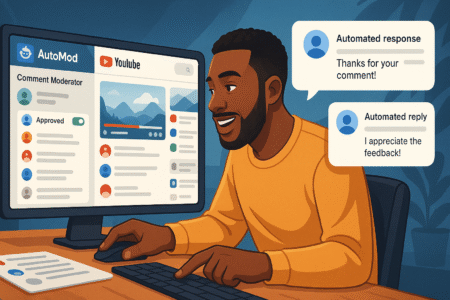
Comments aren’t just feedback—they’re signals. When you use them strategically, they can help boost engagement, spark conversation, and increase the chances your video gets recommended. With a few smart systems, you can automate parts of the process while keeping it authentic.
How Comments Influence the YouTube Algorithm
YouTube pays attention to comments. When viewers engage through likes, replies, and threads, it signals that your video is worth watching.
Why this matters:
- Higher comment volume often leads to better visibility in search and suggested videos.
- Comment engagement contributes to watch session metrics.
- It creates a feedback loop: more comments → more views → more comments.
That’s why investing in comment strategy—especially one that can scale—isn’t just about community building. It’s about growth.
Comment Templates That Encourage Replies and Shares
You don’t have to write a brand-new comment every time. Templates can help speed things up while still feeling personal.
Here are a few that work well:
- Opinion prompts: “Do you agree with this strategy, or would you do it differently?”
- Poll-style questions: “Which part of this video was most helpful—step 1, 2, or 3?”
- Share requests: “Tag a friend who needs to see this.”
Each of these invites action, not just observation. That’s what helps your comments turn into conversations—and conversations into clicks.
Automating First Comments To Spark Engagement
The first comment under your video sets the tone. You can use scheduling tools like TubeBuddy or Hootsuite to automatically post a pinned comment right after publishing.
Ideas for first-comment automation:
- Ask a related question that matches the video topic.
- Drop bonus links (to resources, PDFs, or playlists).
- Give timestamps or quick summaries for skimmers.
Just be sure to monitor replies—even if the comment is automated, the follow-up should feel human.
How To Use Pinned Comments To Boost Click-Through Rates
Pinned comments are prime real estate. If you want to drive traffic or guide viewers toward a next step, this is the place to do it.
Ways to use pinned comments effectively:
- Promote another video: “Want more on this? Watch my SEO walkthrough next.”
- Feature a subscriber’s comment: Builds trust and encourages engagement.
- Tease future content: “Next week’s video dives into this even deeper—stay tuned.”
You can test different formats to see which ones actually get likes or replies. It’s a subtle but powerful part of your content strategy.
Track Analytics To Refine Your Autopilot Strategy
To get YouTube views consistently, you have to understand what’s working—and why. Tracking the right data lets you double down on high-performing tactics and cut what’s wasting time.
Key Metrics To Watch For Growth On Autopilot
Some metrics matter more than others when you’re aiming for sustainable growth.
Focus on these:
- Click-through rate (CTR): Measures how often people click your thumbnail.
- Average view duration: Higher duration equals better retention.
- Engagement rate: Likes, comments, and shares per video.
- Traffic sources: Where views are coming from—search, browse, external, etc.
Each metric gives clues about how viewers interact with your content, helping you adjust your approach based on real behavior.
Using YouTube Studio To Discover What Works
YouTube Studio has improved a lot—and now gives surprisingly deep insights if you know where to look.
Go to the Analytics tab and explore:
- Reach: CTR, impressions, and how people found you.
- Engagement: Which videos get the most watch time and why.
- Audience: Viewer demographics and returning vs. new visitors.
Use these insights to spot patterns. Maybe your tutorials perform best on weekdays, or your thumbnails with faces get higher CTR. Follow the trail.
Automating Reports With Google Data Studio
If you want an at-a-glance dashboard without manually checking analytics every day, Google Data Studio can help.
Set it up to:
- Pull YouTube data directly via connectors.
- Track your key performance indicators (KPIs) on one screen.
- Share automatic updates with your team or clients.
You can schedule weekly or monthly summaries to stay on top of performance without digging through menus.
A/B Testing Thumbnails and Titles Without Manual Work
Changing a title or thumbnail can change everything—but doing it manually for every video is time-consuming. Tools like TubeBuddy offer automated A/B testing, where you can rotate thumbnails and measure which performs better.
Test things like:
- Close-up vs. zoomed-out images.
- Short vs. descriptive titles.
- Color contrast, font size, or emotion in the design.
You might be surprised by what wins. What feels right isn’t always what performs best—and testing removes the guesswork.
Set Up YouTube Channel Triggers Using Automation Tools
The more you can automate your channel’s workflow, the more you free up time to create. Automation tools like IFTTT and Zapier help you scale without burning out—and they work behind the scenes 24/7.
How To Use IFTTT and Zapier To Automate Growth
IFTTT (If This Then That) and Zapier let you link platforms and set up automatic actions.
Here’s how they help YouTubers:
- Share new videos to all social media accounts.
- Send alerts to your phone or team when videos go live.
- Save all new video links to a spreadsheet or database for repurposing.
Think of them as your behind-the-scenes assistant—once set up, they run without any input.
Linking Video Uploads to Email, SMS, or CRM Alerts
Want to instantly notify subscribers, clients, or team members when a new video drops? Set up triggers that push out notifications via:
- Gmail: Auto-send a styled email with the video title and link.
- SMS services: Send text alerts to a contact list.
- CRMs like HubSpot or ConvertKit: Tag new subscribers based on video behavior.
This works especially well for business-focused or educational channels where consistent communication builds trust.
Creating Auto-Responses to Subscriber Milestones
When you hit 1K, 10K, or 100K subscribers—it’s a big deal. Automating a response can help you celebrate and connect with your community.
Ideas include:
- Triggering a thank-you email or video link.
- Sharing a giveaway form when a milestone is reached.
- Posting a milestone announcement to your website or social channels automatically.
Zapier makes this easy by detecting subscriber count changes and launching pre-set actions.
Building a Workflow That Grows With Minimal Input
The key to sustainable growth is a workflow that expands as you do.
Here’s a simple starter flow:
- You upload a video.
- Zapier posts it to social media and your blog.
- Your email list gets notified.
- A comment is auto-posted.
- You track performance on a live dashboard.
That’s five growth steps from one upload—with almost no manual input. It’s not about replacing your voice, just giving it a smarter system.
Bring It All Together: Make YouTube Work For You While You Sleep
If you’ve made it this far, you’re not just hoping to get YouTube views—you’re building a system that earns them consistently, even when you’re not online. That’s the difference between hustling for views and creating a sustainable, growth-driven channel.
From using evergreen content and smart keyword placement to playlists, automation tools, and engagement strategies—you now have a framework to turn your channel into a self-sustaining engine. These aren’t shortcuts; they’re smart steps that work together to multiply your efforts.
Here’s a quick takeaway to keep you grounded:
- Focus on timeless content that solves real problems.
- Let automation handle the busywork so you can focus on creativity.
- Use data to fine-tune, not second-guess your content.
- Keep engaging with real humans, not just chasing numbers.
Building a channel on autopilot isn’t about doing less—it’s about doing the right things once and letting them scale over time.
Pro tip: Choose just one strategy from this guide and apply it fully before moving to the next. Momentum builds faster when your foundation is strong.

